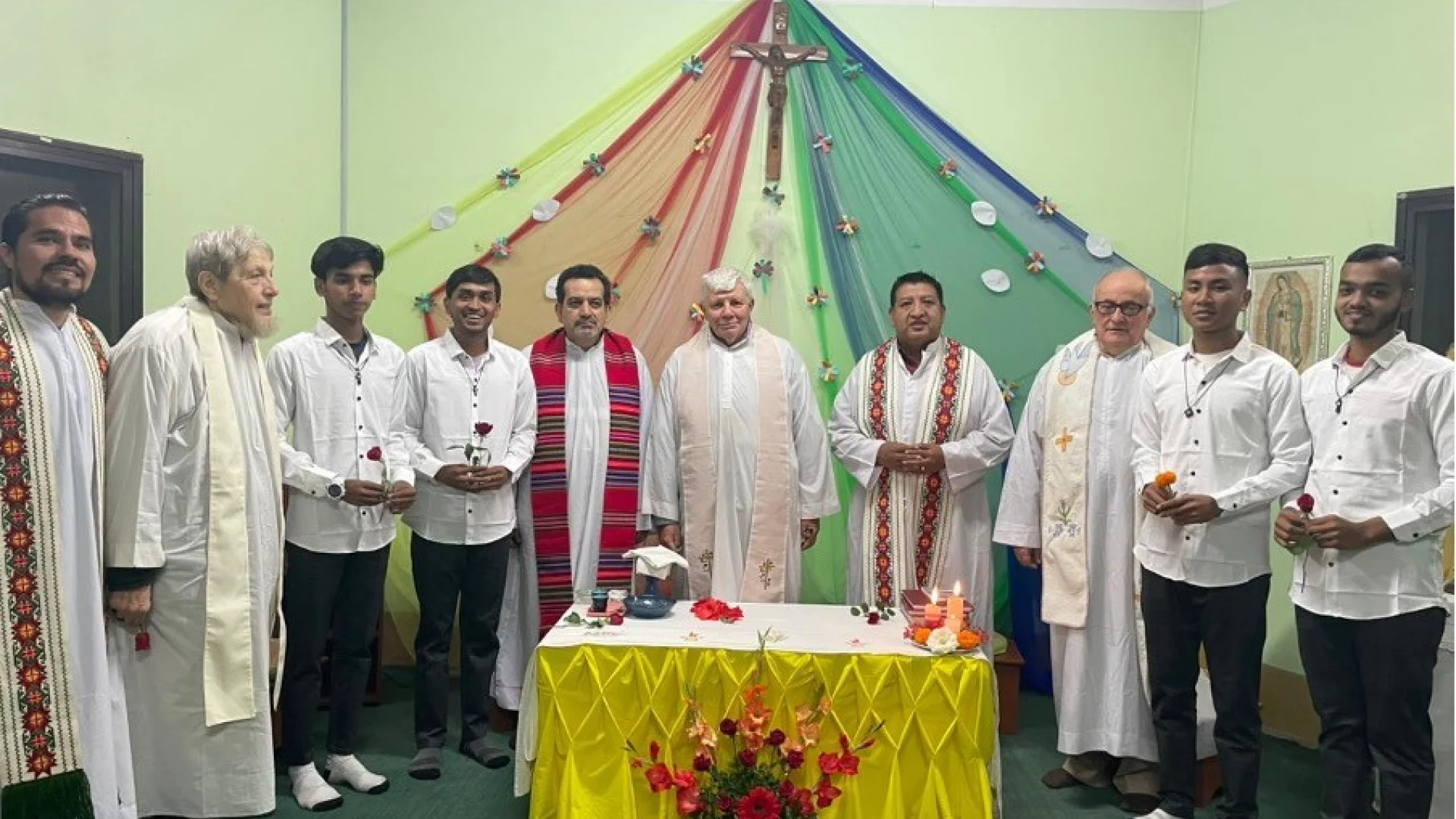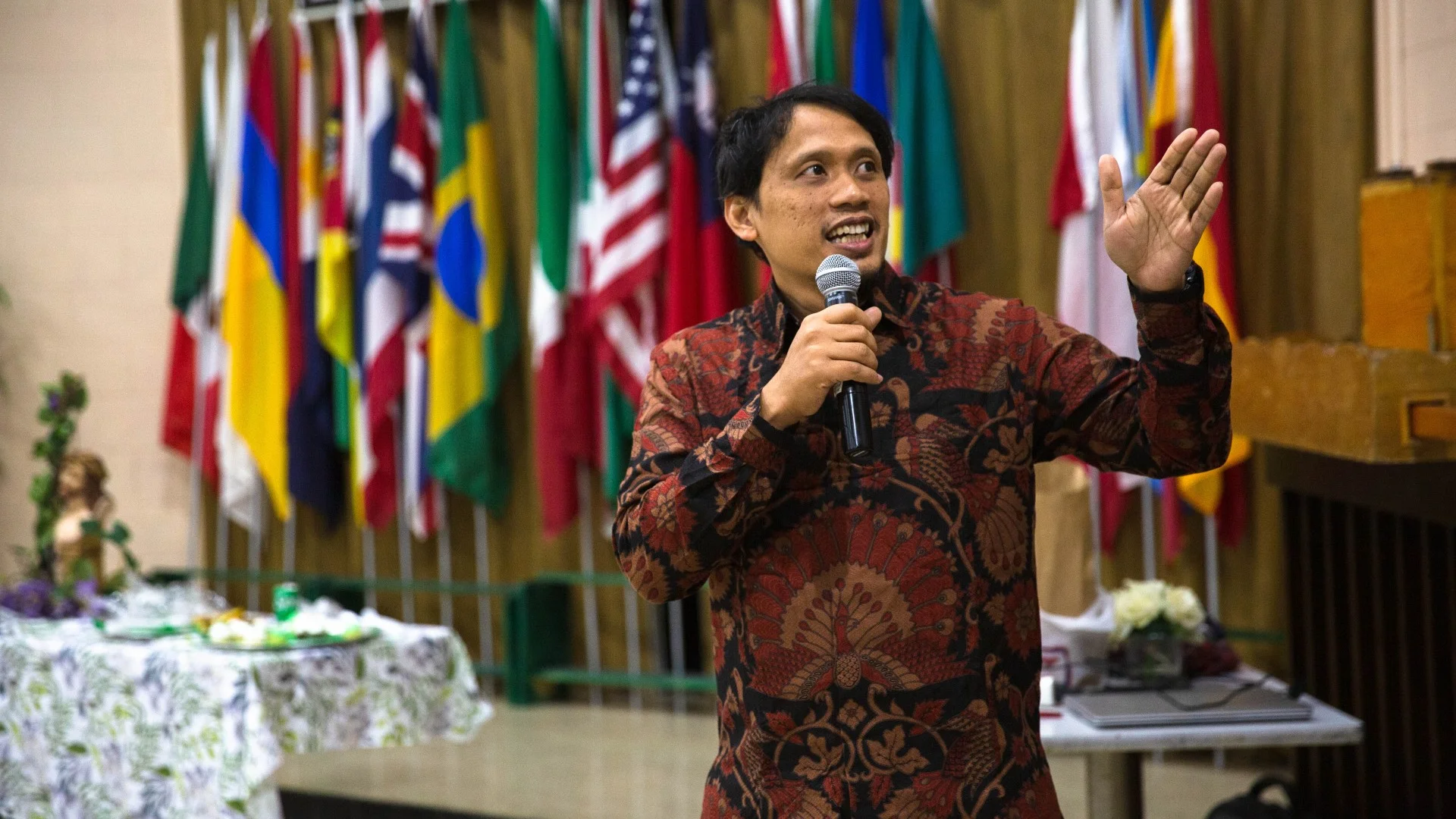Fresh News from the Worldwide Network of the Xaverian Missionaries – 1.19.2025
Bangladesh Embraces New Xaverian Candidates

MANIKTOLA, BANGLADESH – The Xaverian Missionaries in Bangladesh welcomed four young candidates to the propaedeutic stage of their formation program at the beginning of this new year. This initiative, born from the XV Regional Chapter of 2023, reflects the region’s commitment to nurturing local vocations and fostering a new generation of missionary leadership.
In the tranquil surroundings of the Xaverian Formation House in Maniktola, the four candidates began their journey of discernment and spiritual growth. Among them are Thiseng Rema, 20, from the Diocese of Mymensingh, and three candidates from the Diocese of Barisal: Ronaldo Hazra, 19; Gabriel Biswas, 20; and Rico Jhon Baidya, 21. Together, they represent the second group to embark on this preparatory stage, designed to lay a strong foundation for their future missionary lives.
The formation process is led by Fr. Melecio Cuevas Contreras, supported by a dedicated formation team. Their task is to guide the candidates through an intense period of vocational discernment and spiritual development. This phase is critical, as noted in the Xaverian Constitutions (RFX 204): “Initial accompaniment is an indispensable task for an honest vocational search, and for a serious, loyal and serene discernment, in view of applying for admission to Postulancy.”
Speaking about the importance of this stage, Fr. Contreras emphasized the need for candidates to embody the Xaverian lifestyle and mission. “The Lord provides for the continuity of our family by giving us new brothers. We welcome them with joy and gratitude and pledge to share with them, by word and example, the experience of the Spirit we have received from the Founder,” he shared, quoting the Xaverian ethos (C.1).
This event underscores the growing vitality of the Xaverian mission in Bangladesh. By opening its doors to these young men, the region ensures the sustainability of its missionary work and deepens its connection with the local community. The journey ahead for these candidates will be one of challenges, learning, and transformation as they prepare to serve with dedication and faith.
Leadership Transition at the Our Lady of Fatima Shrine

HOLLISTON, MA – The Xaverian Missionaries have announced a leadership change at Holliston’s Our Lady of Fatima Shrine. After more than seven years of service as the community superior and director of the shrine, Fr. Rocco Puopolo will step down from his role on January 31, 2025.
During his tenure, Fr. Rocco became a respected figure, known for his commitment to fostering a welcoming spiritual environment. His leadership enhanced the shrine’s reputation as a destination for prayer, reflection, and interfaith dialogue. The U.S. Delegation expressed its gratitude for his dedication, noting his significant contributions to the shrine’s mission. While his directorship is ending, Fr. Rocco is expected to remain involved in the shrine’s ongoing activities.
Effective February 1, 2025, the shrine will be co-directed by Fr. Carl Chudy and Brother Kornel Glossanto. Fr. Carl will also assume the role of community superior. This leadership duo brings a renewed focus on interfaith and ecumenical initiatives, signaling a commitment to strengthening the shrine’s role as a hub for spiritual connection across faith traditions.
The shrine’s new leadership team aims to build on its legacy as a beacon of unity and peace. Fr. Carl’s experience in interfaith dialogue and Brother Kornel’s pastoral insight are expected to expand the shrine’s outreach and community engagement.
Located in the heart of Holliston, the Our Lady of Fatima Shrine has long been a cornerstone for the faithful and a symbol of the Xaverian Missionaries’ global commitment to peace and understanding. This transition marks a new chapter for the shrine, one rooted in the same values that have guided it for decades.
The community awaits this new era with anticipation, confident in the vision and leadership of the incoming directors. For many, the shrine continues to be a place of hope and reconciliation in an increasingly divided world.
ASIAN CONTINENT: 2025 ASSEMBLY OF THE CHINESE DELEGATION
Right now (in the afternoon, on Thursday 16th, 2025), we are at the conclusion of the Assembly of the Chinese Delegation. Ten participants: in addition to the eight of us, with us are the Fr. General Vicar and Fr. Gian Paolo Succu, Regional Superior of Japan, invited to deepen our mutual knowledge, share our mission experiences, and explore ways of possible collaboration. It is an experience full of joy and hope because of the divine gifts we are experiencing. Our economy is healthy, under the watchful eye of Providence; our relationships are serene, in a cheerful fraternal simplicity; we have hopes – incredible dictum under these skies – of new vocations; we are awaiting new Confreres; it seems that we can also resume contacts with the other Religious Family part of the Xaverian Charism, of which we knew little or nothing. In short, as for Paul, a great door opens slowly because this sublime gate is genuinely/ great, but inexorably, because He who moves it is strong. (Fabrizio Tosolini s.x.)
AMERICAN CONTINENT – BENEVIDES – PARÁ – BRAZIL: ORDINARY GENERAL ASSEMBLY – NORTH BRAZIL REGION
The Ordinary General Assembly of the North Brazil circumscription was held at the Centro Mariapolis Glória, Benevides-PARÁ, Brazil, from 10 to 12, January 2025.
In the morning session on Friday, January 10, 2025, Mgr José Ionilton Lisboa de Oliveira sdv, bishop of the Prelature of Marajó, helped the participants to deepen their understanding of the socio-ecclesial context of the reality of Brazil and Amazonia. In the afternoon, Frs. Roberto Carlos Marques da Silva and Pedro Saúl Ruiz Álvarez, Regional Superiors of South Brazil and North Brazil, respectively, presented the current reality of the two Xaverian regions and prospects—the councilors of the General Direction, Frs. Felipe de Jesús López Orozco and Franciscus Xaverius Sudarmanto introduced the reality of the new configurations of the Xaverian Circumscriptions in the world.
On Friday evening, January 10, 2025, the Regional Bursar presented the Region’s economic situation. On Saturday, January 11, work began with the reading in the plenary of the report of the meeting between members of the two Xaverian Regions of Southern and Northern Brazil, held in July 2024 in Coronel Fabriciano. Groups were then formed to study the objectives of the current meeting, particularly the qualification of the Xaverian missionary presence in Brazil and the evaluation of a possible unification of the two Xaverian regions (North and South Brazil).
In the afternoon plenary session on Saturday, January 11, 2025, the groups’ results were shared, and after some clarifications, recommendations were made. On Sunday, January 12, 2025, the councilors of the General Direction pointed out some elements and dialogued with the members of the Assembly. On Sunday afternoon, January 12, 2025, the two pastoral zones of Brazil North met to plan and schedule meetings for the year. Afterward, plans and programs were shared in the plenary session. Finally, the place and date of the following elective General Assembly in 2026 were set.
ASIAN CONTINENT – CHINESE NEW YEAR – A PRECIOUS TIME TO COME TOGETHER AND START AGAIN: THE YEAR OF THE SNAKE (蛇年 Shé Nián)
Lunar New Year or Chinese Spring Festival (中国春节 Zhōng Guó Chūn Jié) this time falls on 30th January, 2025, and it is the Year of the Snake in the Lunar Calendar. Snakes have special symbolic meanings in traditional Chinese culture: wisdom, energy, and rebirth. The snake is considered to be good at dealing with complex situations flexibly. Although the snake is small, it is agile and powerful. Snakes have the ability to shed their skin, symbolizing rebirth and self-renewal.
Red is the primary color of the Spring Festival, symbolizing joy and good fortune. People will decorate the house with Spring Festival couplets, red lanterns, etc. New Year’s Eve (29th, January) is particularly marked by reunion. Many meaningful and unique dishes, such as dumplings and sticky rice cakes, are served during that time. Setting off firecrackers on New Year’s Eve is essential in warding off evil spirits and welcoming good fortune. On the New Year (30th, January), people will all wear new clothes to greet each other. Young people will greet their elders, and the elders give “red envelopes” (红包 Hóng Bāo). Firecrackers are expected in the early morning to express the lively atmosphere of welcoming the New Year. Many other modern innovations are popular for Spring Festival now: digital red envelopes (or “WeChat red envelops”), lantern displays, City festival activities, etc.
For the Xaverians, whose presence in the land is a channel of grace, Chinese New Year offers the opportunity to celebrate and dine with many old and new friends, entering their families to share the joy of friendship and New Beginning.


